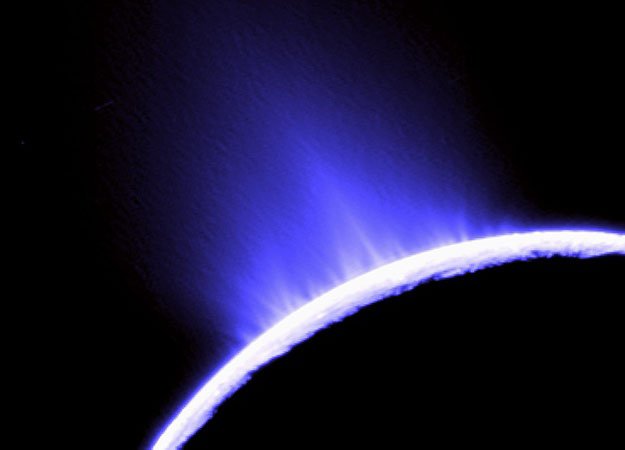
NASA’s Cassini probe will make today its lowest pass yet over the south pole of Enceladus, an active moon of Saturn which may harbor a liquid water ocean.
The flyby, at an altitude of 74 km (46 miles), will allow Cassini to “taste” the jets of ice and water vapor that gush from the moon’s polar region.
Several lines of evidence suggest these jets are fed by a liquid water ocean beneath Enceladus’ outer icy shell.
The probe’s closest approach will take place at 19:30 GMT on Tuesday.
The scientists will use Cassini’s Ion and Neutral Mass Spectrometer instrument to learn more about the composition, density and variability of the plumes from Enceladus.
Scientists previously detected salts in these jets, which suggested the sub-surface liquid water ocean was probably in contact with Enceladus’ rocky core.
This makes Enceladus an even more important target in the search for life elsewhere in the Solar System, as rocks could furnish the ocean with the chemical ingredients thought essential for life.

The plumes erupt from fissures at the south pole known as “tiger stripes”.
Last week, scientists presented evidence of a connection between the jet activity on Enceladus and the way Saturn’s gravity stretches and stresses the fissures.
The results were outlined by Terry Hurford, from NASA’s Jet Propulsion Laboratory (JPL), at the Lunar and Planetary Science Conference (LPSC) in The Woodlands, Texas.
However, about 35% of the observations could not be explained by tension in the jets’ source regions.
Enceladus moves around Saturn in a distorted, oval-shaped orbit rather than a circular one. This causes the moon to be pulled and squeezed by Saturn’s gravity, inducing the heat that enables geological activity on the icy moon.
Cassini’s closest approach to any part of Enceladus occurred in October 2008, when it flew within about 25 km (16 miles) of the surface.
A flyby in October 2015 will bring Cassini about 25 km closer to the moon.